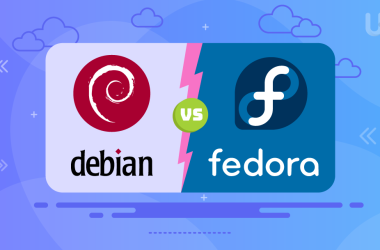UX copywriting and marketing copywriting are two different approaches, yet complementary, to drive user experience and business growth. Copywriting is significant for the creation of digital content. It directly affects the way users interact with websites, apps, and ads. The right kind of copy captures attention, gets the message across, and pushes the audience into action. Whether it’s for user experience or marketing purposes, the right choice of words can make all the difference in a digital strategy. In today’s competitive online world, businesses rely on strong copy to connect with their audience and drive results.
In this blog, we will explain the essential differences between UX copywriting and marketing copywriting. Though both play important roles, they differ in approach toward content creation. While UX copywriting aims at making the user experience smoother, marketing copywriting has a focus on persuasion and conversion. With this distinction in mind, businesses will be able to use each better in creating a seamless journey for the user and marketing success.
What is UX Copywriting?
UX copywriting is essential content that helps improve how people interact with digital products- for example, websites and mobile applications. Most shoppers now shop on their smartphones, so websites need to adapt to smaller screens. That involves creating text to make users navigate through interfaces, understand features, and achieve their objectives easily. As a result, UX copywriting concentrates on clarity and simplicity. This is because user experience copy should be understandable, intuitive, and effective to ensure users can obtain what they want with a minimal amount of effort.
User-Centered Content Design
The core focus of UX copywriting is user-generated content. It’s all about knowing one’s target audience, designing content that will help users achieve their goals and meet their expectations, reducing the cognitive load, and allowing them to better focus on the completion of their tasks instead of figuring out how to use the interface. This user-centered approach aims to provide the most relevant and helpful information at each stage of the user’s journey. For example, instead of using jargon or complex sentences, UX copywriting uses simple, action-driven language that guides the user naturally through their experience.
Contributing to Usability in UX Copywriting
UX copywriting directly contributes to the usability of a website or app. It helps ensure that users can quickly and efficiently find the information they seek. Good UX copywriting gives the right calls to action, labels, and instructions that can be easily followed. For instance, while filling in a form, short instructions such as “Enter your email address” or “Choose a password” give the user an exact idea of what is expected of them. Additionally, UX copywriting also helps in foreseen user confusion or frustration with helpful prompts or error messages. This level of care not only makes a product more friendly to use but also develops a positive relationship between the user and the brand.
Examples of UX Copywriting
- Buttons: These are the most important elements of any interface. UX copywriters come up with short, action-oriented phrases that guide users to the next step. They can be “Sign Up Now,” “Learn More,” or “Add to Cart.” The phrase needs to be clear and compelling for users to flow naturally and not hesitate or feel lost.
- Error Messages: UX copywriting can further reduce the blow of a mistake by providing clear, constructive error messages for the user. Instead of an unclear message, such as “Something went wrong,” it should say, “Oops! We could not process your payment. Check your card details and try again.” This does not just explain the problem but also gives a possible solution for the same, reducing frustration and keeping the user trusting.
- Onboarding Texts: Onboarding is critical to making sure that users know how to use a product or service. The onboarding text by a UX copywriter has to be engaging and easy to follow to introduce the key features of a product. For example, “Welcome! Let’s get you started with setting up your account” is an inviting way to guide new users through their first steps. In addition, tooltips or pop-up instructions when the user interacts with some elements help clarify the features and functions.
- Forms and Fields: UX copywriting is further important to facilitate form field simplification. Instead of using the generic labels “Enter Text Here,” it uses more accurate and useful labels like “Enter your full name” or “Please enter a valid email address.” This ensures users better know what kind of information needs to be entered, making it more enjoyable and less likely to trigger errors.
What is Marketing Copywriting?
Marketing copywriting is the art of using words within a written composition that effectively aims at promoting a product, service, or brand. Its intention primarily lies in attracting and engaging such potential customers who are influenced to take specific actions. Such actions could include purchasing a product, signing up for a newsletter, or downloading an application. In marketing copywriting, compelling language is used to connect with the audience, capture interest, and create a sense of the more critical aspects that drive sales and conversions.
Persuasion and Influencing the Target Audience
The primary function of marketing copywriting is persuasion. It is conceptualized to speak directly to the target audience’s emotions, desires, and needs. Marketing copy through the very use of phrasing tries to nudge the decision-making mind as it highlights benefits. It addresses the pain points and creates a sense of urgency. For instance, “Buy Now and Save 20%” creates an instant action from the audience toward immediate action. While emphasizing the value received. Persuasive techniques such as social proof, scarcity, and strong calls to action guide consumers toward taking the desired step. It is done with the help of a marketing copywriter.
Ready to Boost Your Online Store’s Performance?
Discover how Ultahost’s eCommerce hosting can help you achieve faster speeds, enhanced security, and seamless scalability. Visit Ultahost eCommerce Hosting to get started today!
Marketing copywriting plays a central role in various advertising mediums. In advertising campaigns, it crafts messages that resonate with the target audience and persuade them to engage with the brand. Whether through TV ads, digital banners, or print ads, the copy must capture attention and motivate action quickly. In email marketing, copywriters craft subject lines, body copy, and calls to action that will make the recipient click through, read it, and finally buy. The same applies to social media posts: marketing copy must be as brief as possible but compelling enough to convince users to engage, share, or visit a website. Each of these channels demands copy specifically suited to the tone of the medium and its given audience yet with the same end goal of a high conversion rate.
Examples of Marketing Copywriting
- Product Descriptions: These short but persuasive texts are pieces that will emphasize the main features and, of course, the benefits of a particular product. For example, a product description for a fitness tracker may read: “Track your steps, monitor your heart rate, and reach your fitness goals faster with this sleek, waterproof fitness tracker. Get yours today and take the first step towards a healthier lifestyle.”
- Landing Pages: A landing page is designed to convert visitors into leads or customers. It is usually characterized by an attention-grabbing headline, persuasive copy, and a clear call to action. For instance, “Sign up now to unlock your 30-day free trial and experience the best productivity tool for professionals.”
- Promotional Emails: These promotional emails will seek immediate sales or action. A promotional message such as, “Limited time offer: 25% off all orders this weekend only! Use code SAVE25 at checkout.” may make up a copy that emphasizes urgency and value to the recipient, helping them to take action promptly.
- Social media posts: This copy works well on Instagram, Twitter, or Facebook. A post could say, “Prepare to have the summer of your dreams with our 30% discount on swimwear. Shop now and have a dive into savings!” The copy excites, points out the offer, and mentions the call to action.
Key Differences Between UX and Marketing Copywriting
Here’s an enhanced and detailed comparison between UX Copywriting and Marketing Copywriting:

Purpose and Goal
UX Copywriting: The primary goal of UX copywriting is to enhance the user experience. It achieves this by providing clarity, guiding users through interfaces, and improving navigation. The focus is on creating a seamless and intuitive experience that helps users accomplish their tasks with minimal effort. Whether it’s a call-to-action button or an error message, UX copywriting aims to make the interaction as smooth as possible.
Marketing Copywriting: Marketing copywriting, on the other hand, focuses on driving conversions and increasing brand awareness. It persuades users to take specific actions, such as making a purchase, subscribing to a newsletter, or engaging with the brand. The primary goal is to influence behavior by appealing to emotions, needs, and desires, creating urgency, and fostering brand loyalty.
Tone and Style
UX Copywriting: The tone of UX copywriting is clear, concise, and instructional. It focuses on guiding users without overwhelming them with unnecessary information. The language used is empathetic, aiming to make users feel comfortable and supported throughout their interaction. UX copywriters strive for simplicity, ensuring that the instructions and messages are easy to follow.
Marketing Copywriting: In contrast, marketing copywriting adopts a persuasive and compelling tone. It often appeals to emotions, aiming to motivate users to take action. Whether it’s excitement, fear of missing out, or the promise of a benefit, marketing copywriting seeks to trigger a response. The language used is designed to capture attention, create interest, and move users toward conversion.
Audience Focus
UX Copywriting: UX copywriting is deeply focused on the user’s immediate needs and actions within an interface. It seeks to understand how the user will interact with the content and how to make those interactions as smooth and efficient as possible. This includes considering the user’s emotional state, minimizing confusion, and providing relevant guidance at each step of the journey.
Marketing Copywriting: Marketing copywriting, however, is primarily aimed at potential customers or lead generation. It works to establish a connection with the audience by building relationships and creating a sense of brand loyalty. The focus is on attracting the right customers, addressing their pain points, and persuading them that the brand’s offering is the solution they need.
Content Placement
UX Copywriting: UX copywriting is found across various elements within websites, apps, and digital platforms. It appears in buttons, forms, error messages, tooltips, and other interactive elements. The placement is strategic, ensuring that users receive the right information at the right moment. It supports the functionality of the product, ensuring that users can easily navigate and complete their tasks.
Marketing Copywriting: Marketing copywriting appears in advertisements, blogs, emails, product pages, and social media posts. It aims to attract attention, drive traffic, and prompt conversions. Unlike UX copywriting, marketing copy pushes users toward specific actions that benefit the brand, such as making a purchase or signing up for a service.
Here’s a detailed comparison between UX Copywriting and Marketing Copywriting in tabular form:
| Aspect | UX Copywriting | Marketing Copywriting |
|---|---|---|
| Purpose and Goal | Enhances user experience by providing clarity, guiding users, and improving navigation. | Aims to drive conversions, increase brand awareness, and persuade users to take action. |
| Tone and Style | Clear, concise, and instructional with an empathetic tone. | Persuasive, compelling, and often emotional or motivational. |
| Audience Focus | Focuses on the user’s needs, emotions, and actions within an interface. | Focuses on targeting potential customers or leads, building brand relationships. |
| Content Placement | Found in websites, apps, buttons, forms, error messages, and other interactive elements. | Found in advertisements, blogs, emails, product pages, and social media posts. |
This table summarizes the key differences between UX copywriting and marketing copywriting, highlighting their distinct purposes, tones, audience focus, and content placement.
How UX Copywriting Affects User Experience
UX copywriting directly influences user experience by providing clear guidance, reducing confusion, and ensuring seamless interactions throughout the user journey.
Clear navigation and instructions are crucial for a positive user experience. UX copywriting ensures that users can easily understand how to interact with a website or app. It eliminates confusion by providing concise, simple, and straightforward instructions. For instance, labels on buttons like “Next” or “Submit” tell users exactly what to expect. When users know exactly where to click or what information is required, they can navigate smoothly, making the experience more enjoyable. Clear instructions not only save time but also help users complete tasks efficiently without frustration.
How UX Copywriting Helps Reduce Friction in User Journeys
UX copywriting plays a vital role in reducing friction during the user journey. Friction occurs when users encounter confusion, uncertainty, or obstacles that prevent them from completing their tasks. Effective UX copywriting addresses these challenges by guiding users at each step. For example, error messages that clearly explain what went wrong and how to fix it reduce frustration and confusion. Similarly, well-written onboarding texts can provide new users with the necessary context and instructions, making their experience smoother. By anticipating potential points of confusion and providing helpful guidance, UX copywriting removes barriers, making the user journey more seamless.
UX Copywriting Improves Customer Satisfaction and Reduces Bounce Rates
Good UX copywriting directly impacts customer satisfaction and helps reduce bounce rates. For example, a user who encounters a clear, friendly error message—like “Oops! Something went wrong. Try refreshing the page or contact support”—is less likely to feel frustrated and more likely to continue engaging with the website. When users can easily understand what to do next, they are more likely to stay on the page and complete their actions.
Another example is an intuitive sign-up process. If each step of the form is clearly explained, with helpful tooltips and progress indicators, users will feel confident as they move through the process, leading to a lower abandonment rate. Furthermore, UX copy that explains the value of a product or service in a way that resonates with the user can significantly reduce bounce rates, keeping visitors engaged longer. They are more likely to complete their tasks, return to the site, and recommend the platform to others, contributing to higher satisfaction and engagement levels.

The Role of Persuasion in Marketing Copywriting
Persuasion in digital marketing copywriting motivates users to take action by appealing to their emotions, creating urgency, and highlighting clear benefits.
The Art of Persuasion in Marketing Copy
Persuasion is at the core of marketing copywriting. The goal is to influence potential customers to take specific actions, such as buying a product, signing up for a service, or engaging with a brand. Effective persuasion requires understanding the target audience’s needs, desires, and pain points. By crafting messages that appeal to these emotions and motivations, marketing copy can encourage users to act. Persuasive language often taps into feelings like urgency, exclusivity, or fear of missing out (FOMO), compelling users to take immediate action. Good marketing copy addresses the “what’s in it for me?” question, providing clear benefits and a sense of value.
Looking to Build or Scale Your Social Network?
Ultahost’s Social Network Hosting provides fast, secure, and reliable solutions for seamless user experiences. With 24/7 support and scalable features, we’ve got you covered. Visit Ultahost Social Network Hosting and get started today!
How Marketing Copy Motivates Users to Take Specific Actions
Marketing copy motivates users to take action by clearly highlighting the benefits of the product or service, making the offer irresistible. It creates a sense of urgency, which nudges users to act before the opportunity passes. For example, phrases like “Limited-time offer” or “Only 3 spots left!” trigger immediate responses. By presenting solutions that solve users’ problems or fulfill their desires, the copy builds a sense of anticipation and need, making users more likely to click, purchase, or sign up. Secure payment icons, reliable SSL certificates, and privacy policies build confidence
Examples of Persuasive Tactics
- Calls to Action (CTAs): These are essential persuasive tools in marketing copy. Clear, action-driven CTAs like “Shop Now” or “Sign Up for Free” prompt users to act immediately. Effective CTAs are concise, and specific, and convey a sense of urgency or exclusivity.
- Limited-Time Offers: Creating a sense of urgency is a powerful persuasive tactic. Phrases like “Hurry, offer ends in 24 hours!” or “Only a few left in stock!” push users to act quickly, reducing the likelihood of hesitation. This strategy taps into users’ fear of missing out (FOMO), prompting immediate action.
- Testimonials: Social proof plays a key role in persuasion. By showcasing real customer experiences, testimonials build trust and credibility. For example, a satisfied customer’s review stating, “This product changed my life!” can motivate new users to make a purchase, and feel more confident in their decision.
How UX Copywriting and Marketing Copywriting Work Together
UX copywriting and marketing copywriting work together by guiding users seamlessly from initial interest to final action, ensuring a smooth and engaging experience.
Supporting the User’s Journey with UX Copywriting
UX copywriting guides users through their journey on a website using CRM hosting. It provides clear, concise instructions and feedback to ensure smooth navigation. By offering helpful information at each step, UX copywriting helps users complete tasks easily. It complements marketing copy by maintaining a seamless experience. For example, when marketing copy brings users to a landing page, UX copy ensures they stay engaged and focused on their goals.
Marketing Copy Drives Traffic and Leads Users to Interact
Marketing copy attracts and drives traffic to a website or app through compelling messages and strong calls to action (CTAs). Once users arrive, UX copy takes over, guiding them through the platform. By providing clear directions, UX copy ensures users can easily navigate and complete their desired actions by keeping the experience smooth from start to finish.
Examples of Synergy: Well-Designed Landing Page
A well-designed landing page shows how UX and marketing copy work together. The marketing copy grabs attention with a headline like “Unlock 20% Off Your First Purchase!”. As users scroll, the UX copy provides clear instructions and reassuring messages like “Secure Checkout” to guide them through the process. If an error occurs, UX copy offers simple solutions, ensuring users stay confident and engaged. This combination creates a smooth, effective user experience that drives conversions.
When to Use Each Type of Copywriting
Knowing when to use UX copywriting and marketing copywriting ensures that both types work together effectively to enhance user experience and drive conversions.
When to Use UX Copywriting
- UX Copywriting is used in navigational guides, helping users easily understand how to move through the site or app with clear and simple instructions.
- UX Copywriting is necessary for error messages, providing users with actionable and straightforward solutions to resolve any issues they encounter. It is crucial for onboarding screens, ensuring new users understand how to use the platform by providing concise and helpful instructions to get started.
When to Use Marketing Copywriting
- Marketing Copywriting is essential in advertising campaigns, as it focuses on grabbing attention and creating persuasive messages that attract the target audience.
- Marketing Copywriting should be used in email marketing. It aims to drive user engagement with compelling content that encourages readers to take specific actions like purchasing or signing up. It is ideal for product landing pages, where persuasive copy highlights the product’s key features and benefits. While driving users to convert through clear calls to action.
Overlap Scenarios
Overlap occurs on eCommerce sites, where marketing copywriting persuades users with engaging product descriptions, while UX copywriting ensures smooth navigation by providing clear checkout instructions and reassurances. Promotional landing pages use marketing copywriting to attract users with exciting offers, while UX copywriting guides them through each step, ensuring a seamless experience and helping them complete their actions confidently and without confusion.
Conclusion
UX copywriting focuses on clarity, guiding users smoothly through a website or app while marketing copywriting aims to persuade and drive conversions through compelling messages. Both types are essential for creating a seamless user experience and successful marketing strategies. UX copywriting ensures users can navigate easily while marketing copywriting captures attention and motivates action. By integrating both, you can enhance the effectiveness of your website, app, or marketing campaign, providing a balanced and engaging experience for your audience.
Ready to take your online store to the next level? Choosing the right domain is crucial for your business’s online success. Ultahost’s .shop domain can help you stand out, boost credibility, and enhance your brand’s identity.
FAQ
What is the main difference between marketing copywriting vs UX copywriting?
UX copywriting focuses on clarity and guiding users through a site or app while marketing copywriting aims to persuade users to take action.
How do UX copywriting and marketing copywriting complement each other?
UX copywriting ensures smooth navigation, while marketing copywriting drives traffic and motivates users to engage or convert.
When should I use UX copywriting on my website?
Use UX copywriting for navigation, error messages, onboarding screens, and any content that guides users through the site or app.
When should I use marketing copywriting?
Marketing copywriting is ideal for advertising, product pages, email campaigns, and any content aimed at persuading users to take action.
Can UX copywriting impact conversion rates?
Yes, UX copywriting improves the user journey, reducing friction and making it easier for users to complete desired actions, which can boost conversion rates.
What role does tone play in UX copywriting?
The tone in UX copywriting is clear, concise, and empathetic, ensuring users feel comfortable and informed while interacting with the platform.
How can both types of copywriting work together effectively?
Marketing copywriting draws users in, while UX copywriting ensures a smooth journey, creating a seamless flow from interest to action.












